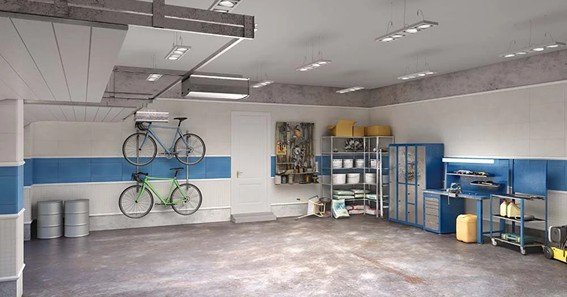Garages often lack proper insulation and ventilation, leading to uncomfortable temperatures during extreme weather conditions. Implementing a suitable garage AC unit can significantly enhance the usability of this space, providing a comfortable environment for various activities.
Types of Garage AC Units
-
Ductless Mini-Split Systems
These systems consist of an outdoor compressor and one or more indoor air-handling units. They are energy-efficient, operate quietly, and offer both cooling and heating capabilities, making them ideal for year-round use. Installation requires a small hole for the conduit, preserving the garage’s structural integrity.
-
Window Air Conditioners
Suitable for garages with existing windows, these units are relatively easy to install and provide effective cooling for medium to small-sized spaces. They are generally more affordable upfront compared to other options.
-
Portable Air Conditioners
These units offer flexibility, as they can be moved and positioned as needed. They require an exhaust hose to vent hot air outside, typically through a window or vent kit. Portable ACs are ideal for occasional use or spaces where permanent installation isn’t feasible.
-
Packaged Terminal Air Conditioners (PTACs)
Commonly found in hotels, PTACs are self-contained units installed through an exterior wall. They provide both heating and cooling, offering a comprehensive climate control solution for larger garage spaces.
Key Considerations When Choosing a Garage AC Unit
-
Garage Size and Insulation: Determine the square footage of your garage and assess its insulation quality. Proper insulation enhances the efficiency of the AC unit and reduces energy consumption.
-
BTU Capacity: Select an AC unit with an appropriate BTU (British Thermal Units) rating to ensure efficient cooling. For example, a 400 sq ft garage typically requires a unit with around 9,000 BTUs.
-
Installation Requirements: Consider the structural modifications needed for installation. Mini-split systems and PTACs may require professional installation, while window and portable units are more DIY-friendly.
-
Energy Efficiency: Look for units with high SEER (Seasonal Energy Efficiency Ratio) ratings to minimize operating costs. Some mini-split systems boast SEER ratings exceeding 24, indicating superior efficiency.
Conclusion
Investing in a suitable garage AC unit enhances the functionality and comfort of your garage, making it a versatile space for various activities. By considering factors such as garage size, insulation, and energy efficiency, you can select an air conditioning solution that meets your specific needs and preferences.FAQs
-
What size AC unit do I need for my garage?
The required size depends on your garage’s square footage and insulation quality. For instance, a 400 sq ft garage typically needs a 9,000 BTU unit.
-
Can I install a window AC unit in my garage?
Yes, if your garage has a suitable window, a window AC unit can be an effective and affordable cooling solution.
-
Are portable air conditioners effective for garages?
Portable AC units can be effective for smaller garages or occasional use. However, they require proper ventilation to exhaust hot air outside.
-
What is a mini-split system, and is it suitable for garages?
A mini-split system is a ductless AC comprising an outdoor compressor and indoor air-handling units. It’s energy-efficient and suitable for garages, especially those without existing ductwork.
-
How can I improve my garage’s energy efficiency?
Enhance energy efficiency by insulating walls and doors, sealing gaps, and choosing an AC unit with a high SEER rating.
Read on to know more about rouses-weekly-ad-preview










